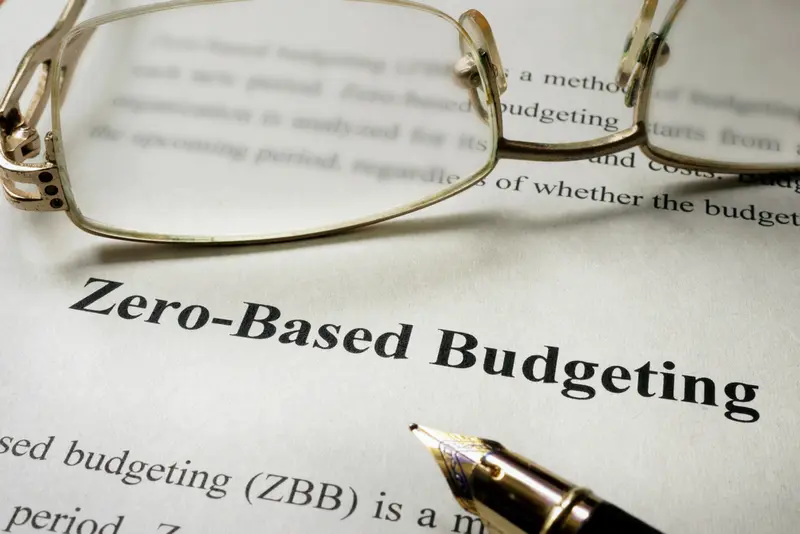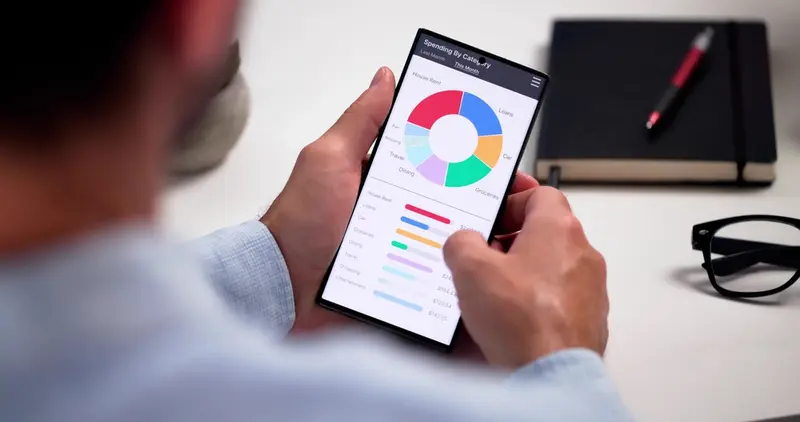Types of Budgets: Choosing the Right Budgeting Method for Your Financial Goals
Brilliant personal financial management is mostly dependent on budgeting. Fundamentally, budgeting is about making conscious choices on how to divide your money such that your income satisfies your financial goals and expenses. One cannot underline the need of budgeting in daily life since it provides the foundation and direction needed to attain both current and long-term financial objectives. Good budgeting helps couples and individuals to avoid debt, start savings, and create financial security.
Managing your money calls for first understanding of the many types of budgets. While the spectrum of budgeting methods can be difficult, your own financial situation, goals, and preferences will guide the ideal one for you. Knowing good budgeting techniques will help you whether your funds are for daily expenses, retirement preparation, or a trip. Analyzing the most widely used budgeting strategies helps this article to clarify their ideas and directions on choosing the one most suitable for your financial situation.

Traditional Budget
The traditional budget, commonly known as a line-item budget, is among the easiest and oldest methods available for tracking expenditure. By grouping all of your income sources and expenses—including housing, food, transportation, and entertainment—you can see trends. Every sector has a monthly budget; you keep an eye on your expenses to ensure you don’t exceed the assigned figures.
Pros and Cons:
The simplicity of the conventional budget has its primary benefit. Your exact knowledge of where your money is going helps you avoid overpaying. For those with stable, predictable expenses such utilities, transportation, and rent or mortgage payments, this approach is perfect.
Still, the traditional budget has some defects as well. It can be difficult since it allows little space for erratic spending. Should an unanticipated expense arise—say a medical emergency—you may have to adjust other categories or target savings.
Ideal For:
This approach will be useful for those who would like handle their money methodically and precisely. It works great for those who wish a disciplined method to monitor every dollar and have regular monthly spending.
Zero-Based Budget
Under zero-based budgeting, you have to set aside every dollar of your income for specific savings or spending. By using this strategy, you want to make sure by the end of the month your total income less your total spending equal zero. Those who wish to handle their finances with discipline and prevent waste of money will especially find this technique helpful.
Steps to Create a Zero-Based Budget:
- List Your Income: Start by identifying all of your sources of income—including salary, bonuses, or freelance work.
- Categorize Your Expenses: Sort your spending into required categories—that of groceries, utilities, and housing among other things.
- Assign Funds to Each Category:: Allocate funds to each group. Set aside some for every category such that every dollar is utilized exactly.
- Track and Adjust: Track and adjust your expenses continuously to ensure you are always staying on target. Should one spending category be underfunded, one may have to make changes in other areas.
Ideal For:
Zero-based budgeting is ideal for those who wish to better control their money, particularly those who want to give debt reduction or handling of specific financial goals top priority or focus of attention.

Envelope System
Using the cash-based budgeting method known as the envelope system, you physically allocate your money to cover all kinds of expenses. Every envelope displays a separate budget line— food, entertainment, gas, or something else completely; the total amount of money in each envelope determines the spending limit in that category.
Benefits and Challenges:
The envelope method encourages planned expenditure by physically limiting the amount of money allowed in every category. Those who struggle with tracking digital transactions or fight overspending will especially benefit from it. The challenge is carrying cash, though, which in the modern era of digital payments might not always be practical. This technique also does not freely apply for automated or recurrent bills or subscriptions.
Ideal For:
Those who would rather budget using a physical and visual approach will find this one helpful. For those who battle impulsive shopping and want to cut expenditure by utilizing actual cash, it’s very successful.
50/30/20 Budget
Among the simpler and most regularly utilized budgets are the 50/30/20 ones. Three primary categories should define your income:
- 50% for Needs: These are fundamental costs: utilities, groceries, rent, and transportation.
- 30% for Wants: Personal expenses covering dining out, entertainment, and shopping.
- 20% for Savings and Debt Repayment: focusses on building your emergency reserve, thereby enabling debt reduction and support of retirement savings.
Benefits:
This budget calls for simple tracking and no broad category; there is not much difficult tracking required. Focusing on percentages helps you to build a flexible structure that accommodates several incomes. It also maintains one in balance between everyday demands, pleasurable activities, and long-term financial objectives.
Ideal For:
Those looking for a basic, flexible budget that balances free money and savings against essential demands would find this strategy ideal. Those who are just starting their budgeting path and want to avoid feeling overwhelmed may find great benefit.

Pay Yourself First Budget
The “pay yourself first” strategy flips conventional budgeting by initially giving savings and investments first priority before you commit money for other expenditures. Using this method, you first set away a portion of your income for emergencies, retirement, and savings. You then budget for bills, entertainment, and extra expenses only after saving.
Benefits:
Focusing on savings before spending helps the pay yourself first approach create financial security. It ensures that your financial priorities—those of building an emergency fund or getting ready for retirement—are your top ones. This method also discourages unnecessary consumption by limiting the money available for non-essential expenses.
Ideal For:
Those mostly investing for long-term goals like retirement or building an emergency fund could find this budgeting strategy appropriate. For individuals with stable income who want to make sure their financial goals come first, it’s ideal.
Proportional Budget
The core of proportional budgeting is grouping your income into numerous categories based on specific percentages. For people with variable income—that is, freelancers or business owners—where your monthly income could fluctuate—this strategy is perfect.
Benefits:
Proportional budgeting lets you change your monthly spending depending on your income. For a good month, for instance, you might set aside more for savings and cut your demand on wants when income is less. This approach gives flexibility and helps avoid lean month expenditures.
Ideal For:
Proportional budgeting will help freelancers, contractors, and everyone else with irregular revenue. It guarantees that necessary changes depending on cash flow allow it to always cover important expenses.

Priority-Based Budget
Under a goal-oriented technique known as priority-based budgeting, you first allocate money to the most important costs. This means setting financial goals—such as debt pay-off or down payment savings—and giving these first priority before attention to less essential spending.
Benefits:
This strategy helps ensure that your most important financial goals are met particularly if you are aiming to save for a specific reason or pay off debt. It inspires intentional spending and helps you prefer your money.
Ideal For:
By directing their activities, a priority-based budget can assist individuals working toward specific financial goals—such as debt pay-off, house savings, or emergency fund building. When financial resources are low, one becomes more disciplined and focused.
Digital and App-Based Budgets
Offering automatic and real-time tracking of expenditure, digital budgeting tools and applications have transformed personal finance management. Linking to bank accounts and credit cards, popular apps like Mint, YNAB (You Need A Budget), and EveryDollar automatically classify transactions and provide insights on spending patterns, therefore simplifying budgeting.
Benefits:
These systems simplify budgeting and assist to reduce hand tracking demand. They can also monitor your progress toward financial goals, serve as helpful reminders, and even issue alerts when you exceed your budget in specific areas.
Ideal For:
Those who seek real-time tracking and automation and who are tech-savvy can notably benefit from digital budgeting applications. These tools will be really helpful for anyone who wants to simplify the budgeting process and exercise greater financial control.

Hybrid Budget
Combining elements of many budgeting strategies, a hybrid budget offers flexibility and personalizing ability. For general spending, say the 50/30/20 rule; for areas of high priority like debt reduction or savings, use zero-based budgeting.
Benefits:
Combining strategies suitable for your financial situation helps you to create a hybrid budget with more flexibility. It’s ideal for those with different income levels, varying financial goals or complex financial needs.
Ideal For:
Those who want a more personalized budgeting approach will find this one perfect. For people who still require the structure of traditional budgeting but desire the flexibility of other ideas including zero-based budgeting or the 50/30/20 rule.
Conclusion
Budgeting cannot be applied universally since every person’s financial condition and objectives are different. Investigating numerous budgeting strategies will help you select the one that best suits your preferred simplicity, discipline, flexibility, or personalized solution.
Try different types of budgets and track your progress to choose the one that most suits your financial goals. Learning budgeting will assist you to minimize debt, improve financial control, and follow the life you have always desired.
FAQs (Frequently Asked Questions)
What is the best budget for beginners?
The 50/30/20 budget is a great option because of its simplicity and ease of use.
Can I switch between different budgeting types?
In fact, if your financial circumstances changes you can alternate between several forms of budgeting. One should discover what suits them best.
How do I track my budget consistently?
Track your expenses with spreadsheets or budgeting software. To keep on target, set reminders and often examine your budget.
References & Resources
- Financial Advice: Dave Ramsey’s Budgeting Tips
- Budgeting Apps: Mint, YNAB
- Books: The Total Money Makeover by Dave Ramsey, Your Money or Your Life by Joe Dominguez
By utilizing the right budgeting method, you can master your finances and work towards financial freedom. The key is consistency and finding the method that fits your lifestyle, goals, and values.